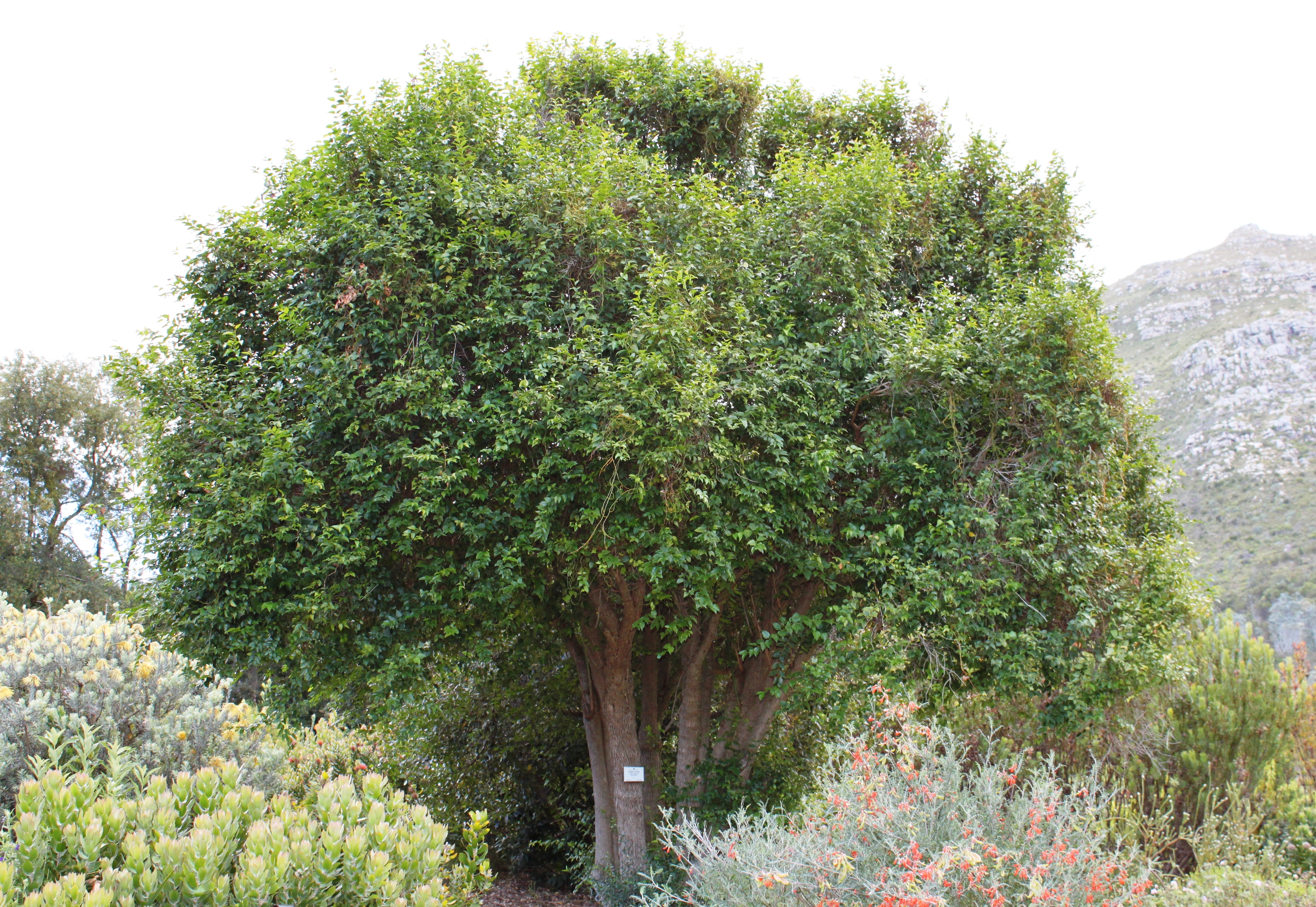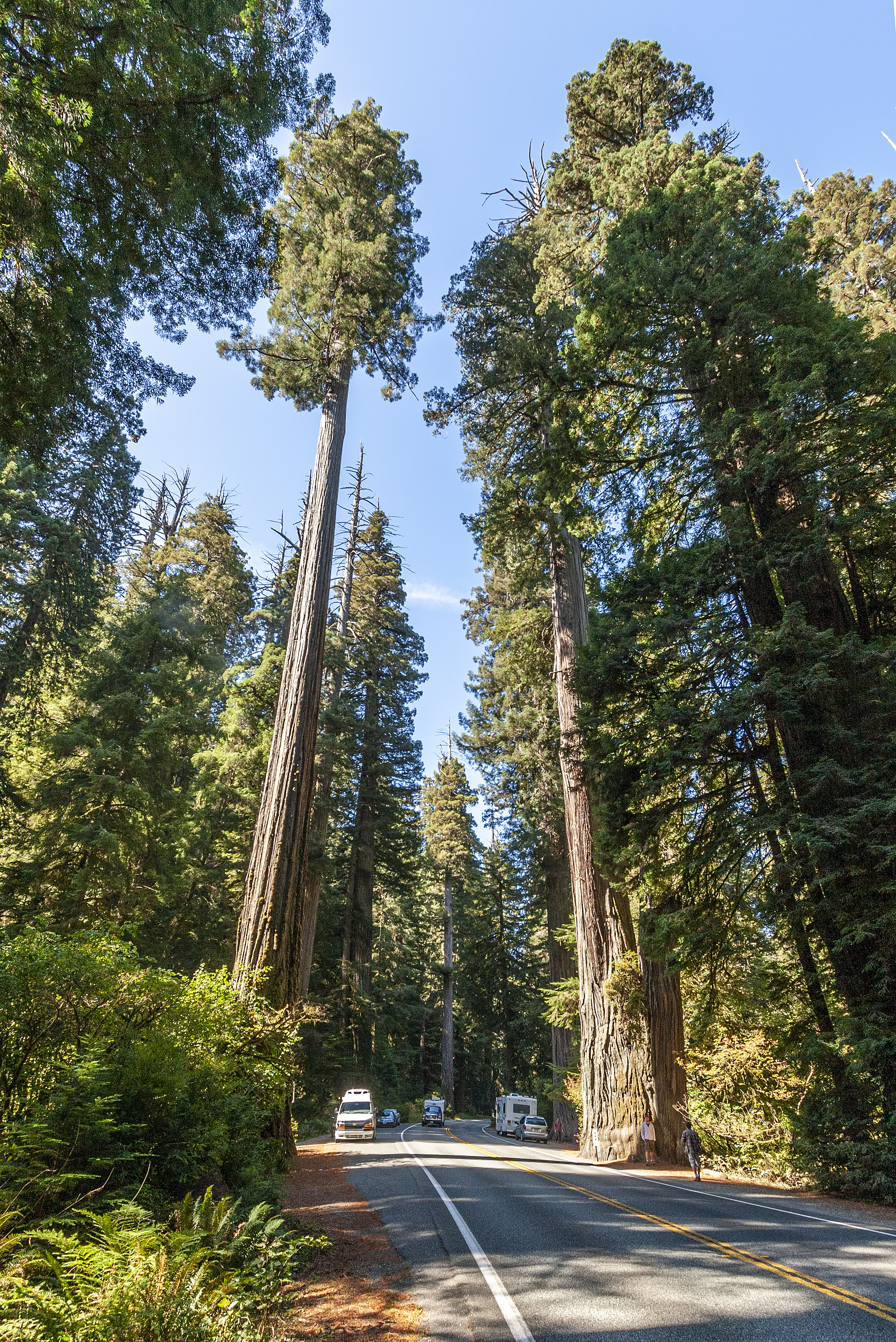|
Halleria Lucida
''Halleria lucida'' (also known as tree fuchsia, umBinza or notsung) is a small, attractive, Evergreen, evergreen tree that is indigenous to Southern Africa. It is increasingly grown as an ornamental tree in African gardens. Appearance This tree has lush, glossy, bright-green foliage on arching and drooping branches. It is often multi-stemmed and can eventually reach a height of over 15m. The way that the dense foliage droops from the hanging branches gives the tree a willowy appearance. ''Notsung'' is unusual in producing its flowers and fruit, not from the tips of its branches like most flowering trees, but from its trunk, exhibiting what is known in botany as cauliflory. This characteristic is also found in other Southern African trees such as Stamvrug. The orange or purple flowers are rich in nectar and Plant sexuality, bi-sexual. The small, fleshy fruits are edible (but do not taste particularly good). It is a member of the Scrophulariaceae, Snapdragon family. Distribution ... [...More Info...] [...Related Items...] OR: [Wikipedia] [Google] [Baidu] |
Carl Linnaeus
Carl Linnaeus (23 May 1707 – 10 January 1778), also known after ennoblement in 1761 as Carl von Linné,#Blunt, Blunt (2004), p. 171. was a Swedish biologist and physician who formalised binomial nomenclature, the modern system of naming organisms. He is known as the "father of modern Taxonomy (biology), taxonomy". Many of his writings were in Latin; his name is rendered in Latin as and, after his 1761 ennoblement, as . Linnaeus was the son of a curate and was born in Råshult, in the countryside of Småland, southern Sweden. He received most of his higher education at Uppsala University and began giving lectures in botany there in 1730. He lived abroad between 1735 and 1738, where he studied and also published the first edition of his ' in the Netherlands. He then returned to Sweden where he became professor of medicine and botany at Uppsala. In the 1740s, he was sent on several journeys through Sweden to find and classify plants and animals. In the 1750s and 1760s, he co ... [...More Info...] [...Related Items...] OR: [Wikipedia] [Google] [Baidu] |
Zulu Culture
Zulu may refer to: Zulu people * Zulu Kingdom or Zulu Empire, a former monarchy in what is now South Africa * Zulu language, a Bantu language spoken in southern Africa * Zulu people, an ethnic group of southern Africa Arts, entertainment, and media Films * ''Zulu'' (1964 film), a war film starring Stanley Baker and Michael Caine * ''Zulu'' (2013 film), a French crime film starring Forest Whitaker and Orlando Bloom Music * "Zulu" (song), a 1981 dance single by British funk duo the Quick * Zulu Records, a record store in Vancouver, British Columbia, Canada founded in 1981 * "Zulu", a song by Blink-182 from the 1996 EP ''They Came to Conquer... Uranus'' * Zulu (band), an American hardcore punk band formed in 2019 Other uses in arts, entertainment, and media * Zulu (Pillow Pal), a Pillow Pal zebra made by Ty, Inc. * TV 2 Zulu, a Danish television station * Zulu Social Aid & Pleasure Club, a Carnival krewe in New Orleans People * Zulu (surname), a surname (including a list ... [...More Info...] [...Related Items...] OR: [Wikipedia] [Google] [Baidu] |
Plants Used In Bonsai
Plants are the eukaryotes that form the kingdom Plantae; they are predominantly photosynthetic. This means that they obtain their energy from sunlight, using chloroplasts derived from endosymbiosis with cyanobacteria to produce sugars from carbon dioxide and water, using the green pigment chlorophyll. Exceptions are parasitic plants that have lost the genes for chlorophyll and photosynthesis, and obtain their energy from other plants or fungi. Most plants are multicellular, except for some green algae. Historically, as in Aristotle's biology, the plant kingdom encompassed all living things that were not animals, and included algae and fungi. Definitions have narrowed since then; current definitions exclude fungi and some of the algae. By the definition used in this article, plants form the clade Viridiplantae (green plants), which consists of the green algae and the embryophytes or land plants (hornworts, liverworts, mosses, lycophytes, ferns, conifers and other gymnosperm ... [...More Info...] [...Related Items...] OR: [Wikipedia] [Google] [Baidu] |
Ornamental Trees
Ornamental plants or ''garden plants'' are plants that are primarily grown for their beauty but also for qualities such as scent or how they shape physical space. Many flowering plants and garden varieties tend to be specially bred cultivars that improve on the original species in qualities such as color, shape, scent, and long-lasting blooms. There are many examples of fine ornamental plants that can provide height, privacy, and beauty for any garden. These ornamental perennial plants have seeds that allow them to reproduce. One of the beauties of ornamental grasses is that they are very versatile and low maintenance. Almost all types of plant have ornamental varieties: trees, shrubs, climbers, grasses, succulents, aquatic plants, herbaceous perennials and annual plants. Non-botanical classifications include houseplants, bedding plants, hedges, plants for cut flowers and ''foliage plants''. The cultivation of ornamental plants comes under floriculture and tree nurseries, wh ... [...More Info...] [...Related Items...] OR: [Wikipedia] [Google] [Baidu] |
Drought-tolerant Trees
In botany, drought tolerance is the ability by which a plant maintains its biomass production during arid or drought conditions. Some plants are naturally adapted to dry conditions'','' surviving with protection mechanisms such as desiccation tolerance, detoxification, or repair of xylem embolism. Other plants, specifically crops like corn, wheat, and rice, have become increasingly tolerant to drought with new varieties created via genetic engineering. From an evolutionary perspective, the type of mycorrhizal associations formed in the roots of plants can determine how fast plants can adapt to drought. The plants behind drought tolerance are complex and involve many pathways which allows plants to respond to specific sets of conditions at any given time. Some of these interactions include stomatal conductance, carotenoid degradation and anthocyanin accumulation, the intervention of osmoprotectants (such as sucrose, glycine, and proline), ROS-scavenging enzymes. The molecul ... [...More Info...] [...Related Items...] OR: [Wikipedia] [Google] [Baidu] |
Trees Of Mediterranean Climate
In botany, a tree is a perennial plant with an elongated stem, or trunk, usually supporting branches and leaves. In some usages, the definition of a tree may be narrower, e.g., including only woody plants with secondary growth, only plants that are usable as lumber, or only plants above a specified height. But wider definitions include taller palms, tree ferns, bananas, and bamboos. Trees are not a monophyletic taxonomic group but consist of a wide variety of plant species that have independently evolved a trunk and branches as a way to tower above other plants to compete for sunlight. The majority of tree species are angiosperms or hardwoods; of the rest, many are gymnosperms or softwoods. Trees tend to be long-lived, some trees reaching several thousand years old. Trees evolved around 400 million years ago, and it is estimated that there are around three trillion mature trees in the world currently. A tree typically has many secondary branches supported clear of ... [...More Info...] [...Related Items...] OR: [Wikipedia] [Google] [Baidu] |
Trees Of South Africa
In botany, a tree is a perennial plant with an elongated stem, or trunk, usually supporting branches and leaves. In some usages, the definition of a tree may be narrower, e.g., including only woody plants with secondary growth, only plants that are usable as lumber, or only plants above a specified height. But wider definitions include taller palms, tree ferns, bananas, and bamboos. Trees are not a monophyletic taxonomic group but consist of a wide variety of plant species that have independently evolved a trunk and branches as a way to tower above other plants to compete for sunlight. The majority of tree species are angiosperms or hardwoods; of the rest, many are gymnosperms or softwoods. Trees tend to be long-lived, some trees reaching several thousand years old. Trees evolved around 400 million years ago, and it is estimated that there are around three trillion mature trees in the world currently. A tree typically has many secondary branches supported clear of t ... [...More Info...] [...Related Items...] OR: [Wikipedia] [Google] [Baidu] |
Plants Used In Traditional African Medicine
Plants are the eukaryotes that form the kingdom Plantae; they are predominantly photosynthetic. This means that they obtain their energy from sunlight, using chloroplasts derived from endosymbiosis with cyanobacteria to produce sugars from carbon dioxide and water, using the green pigment chlorophyll. Exceptions are parasitic plants that have lost the genes for chlorophyll and photosynthesis, and obtain their energy from other plants or fungi. Most plants are multicellular, except for some green algae. Historically, as in Aristotle's biology, the plant kingdom encompassed all living things that were not animals, and included algae and fungi. Definitions have narrowed since then; current definitions exclude fungi and some of the algae. By the definition used in this article, plants form the clade Viridiplantae (green plants), which consists of the green algae and the embryophytes or land plants (hornworts, liverworts, mosses, lycophytes, ferns, conifers and other gymnosper ... [...More Info...] [...Related Items...] OR: [Wikipedia] [Google] [Baidu] |
Afromontane Flora
The Afromontane regions are subregions of the Afrotropical realm, one of the Earth's eight biogeographic realms, covering the plant and animal species found in the mountains of Africa and the southern Arabian Peninsula. The Afromontane regions of Africa are discontinuous, separated from each other by lower-lying areas, and are sometimes referred to as the Afromontane archipelago, as their distribution is analogous to a series of sky islands. Geography Afromontane communities occur above elevation near the equator, and as low as elevation in the Knysna-Amatole montane forests of South Africa. Afromontane forests are generally cooler and more humid than the surrounding lowlands. The Afromontane archipelago mostly follows the East African Rift from the Red Sea to Zimbabwe, with the largest areas in the Ethiopian Highlands, the Albertine Rift Mountains of Uganda, Rwanda, Burundi, Democratic Republic of the Congo, and Tanzania, and the Eastern Arc highlands of Kenya and Tanzania. ... [...More Info...] [...Related Items...] OR: [Wikipedia] [Google] [Baidu] |
Stilbaceae
Stilbaceae is a family of flowering plants in the order Lamiales The Lamiales (also known as the mint order) are an order of flowering plants in the asterids clade of the Eudicots. Under the APG IV system of flowering plant classification the order consists of 24 families, and includes about 23,810 species .... Genera include: *'' Anastrabe'' E. Mey. ex Benth. *'' Bowkeria'' Harv. *'' Campylostachys'' Kunth *'' Charadrophila'' Marloth *'' Euthystachys'' A. DC. *'' Halleria'' L. *'' Ixianthes'' Benth. *'' Kogelbergia'' Rourke *'' Nuxia'' Comm. ex Lam. *'' Retzia'' Thunb. *'' Stilbe'' P. J. Bergius *'' Thesmophora'' Rourke References Lamiales families {{Lamiales-stub ... [...More Info...] [...Related Items...] OR: [Wikipedia] [Google] [Baidu] |
Zulu People
Zulu people (; ) are a native people of Southern Africa of the Nguni people, Nguni. The Zulu people are the largest Ethnic groups in South Africa, ethnic group and nation in South Africa, living mainly in the province of KwaZulu-Natal. They originated from Nguni communities who took part in the Bantu migrations over millennia. As the clans integrated, the rulership of Shaka brought success to the Zulu nation due to his improved military tactics and organization. Zulus take pride in their ceremonies such as the Umhlanga (ceremony)#South Africa, Umhlanga, or Reed Dance, and their various forms of beadwork. The art and skill of beadwork take part in the identification of Zulu people and act as a form of communication and dedication to the nation and specific traditions. Today, the Zulu people are predominantly Christian, but have created a Religious syncretism, syncretic religion that is combined with the Zulu's prior belief systems. History of the people of Zulu Origins Th ... [...More Info...] [...Related Items...] OR: [Wikipedia] [Google] [Baidu] |







